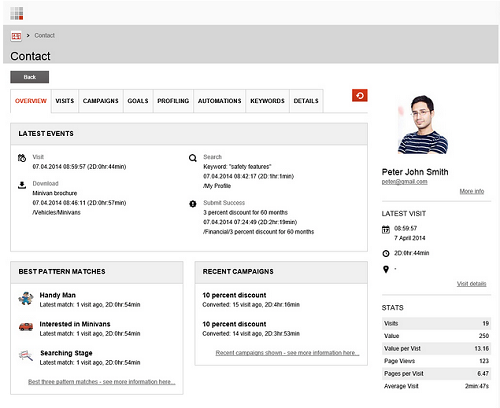With summer now in full swing, and August on its way out, it makes sense to give everyone a quick update on what the upcoming public release of Sitecore® 7.5 entails. With Sitecore’s new business solutions and name changes, I wanted to provide a summary of the most important changes you will encounter.
What’s in a Name?
When Sitecore thinks they’ve made significant progress, they tend to celebrate the accomplishment with a name change. In the past, the Online Marketing System (OMS) became the Digital Marketing Suite (DMS), and when personalization was fully integrated into the Page Editor it became the Experience Editor, and then CMS + DMS became the Customer Experience Platform (phew!).

With 7.5, Sitecore has fully embraced the term "experience" and applied it across the board to their numerous tools. After all, Sitecore has been built around the idea of helping businesses optimize the online experience for their customers, so the name change is only fitting. The various tools found in Sitecore’s toolbox will now be known as the following:
|
Old Name
|
New Name
|
|
Customer Engagement Platform
|
Sitecore® Experience Platform™ (Sitecore® XP)
|
|
Digital Marketing System (DMS)
|
Experience Marketing
|
|
Email Campaign Manager
|
Email Experience Manager
|
|
Engagement Analytics
|
Experience Analytics
|
|
Adaptive Print Studio
|
Print Experience Manager
|
|
Engagement Automatio
|
Experience Automation
|
|
Analytics Database
|
Sitecore® Experience DatabaseTM
|

What else is new?
To warrant the name change, the new Sitecore roll out includes a few key differences:
New Sitecore Experience Database
According to Sitecore, the new 7.5 experience provides a more comprehensive suite of analysis to users, with enhanced tracking capabilities and an encompassing view of the customer that digests both online and offline data. After collecting that data, xDB connects it to each individual customer so your marketers can personalize the experience in real time. Every customer action is being tracked. That translates into a lot of data.
But wait, where does the data go? With the old DMS, every interaction was still being tracked, but you couldn’t keep all of the data because it was just too much. With the new xDB , a Sitecore instance can now gather and collect data continually at lightning speeds. This is possible because the new Sitecore Experience Database is supported with the NoSQL MongoDB®. Sitecore also stated in their draft documentation that this data bank "provides data storage that incrementally scales to terabytes or even petabytes of data". What’s a petabyte you ask? It’s a lot of bytes. 1,000,000,000,000,000 bytes to be exact. (To really put petabytes into perspective, check this out: Visualizing the Petabyte.)
Sitecore® Experience Database™ -
Cloud Edition Sitecore is also planning to offer the experience database as a cloud service, with a pricing model based on the number of customer profiles consumed. This will be hosted on Microsoft Azure, and is more appealing to smaller businesses who do not want to invest heavily in maintaining a MongoDB data center.
Automatic Connectors
Don’t panic,,xDB is equipped with automatic data feeds from your other essential marketing tools such as Salesforce, Microsoft Dynamics, and more.
Aggregating & Reporting
Wait, what about Microsoft SQL Server? Don’t worry Sitecore 7.5 is not doing away with SQL Server. Instead, the SQL database is now being utilized for content and reporting capabilities.
New Sitecore® Experience Profile™
The enhanced Sitecore® XPExperience Profile (xFile™) provides a new user profile that takes separate channel tracking, and populates the data into a single location enabling your marketers to easily view all customer insights such as visits, campaigns, goals, profiling automation, and more. By combining this customer data into a single repository, you can see your customers for the real people they are and how they individually experience your brand!
Implementing this change allows your marketing team to gain a better understanding of your customers and improve your strategic outreach. It also enables marketers to compare profiles and set up rules to send out triggered messages or campaigns to groups of similar profiles.
You can see an example below, provided by Sitecore:

Final Thoughts
In summary, the main benefits of the new rollout include improved performance with scalability, single customer dashboards, seamless integration with critical marketing tools, and a global reach via the Sitecore® Experience Database™ - Cloud Edition. This release is a big step to big data, which is what Sitecore strives for.
If you’re interested in learning more about Sitecore development or additional Sitecore services offered by Americaneagle.com, please contact our expert team members at [email protected] or [email protected]!